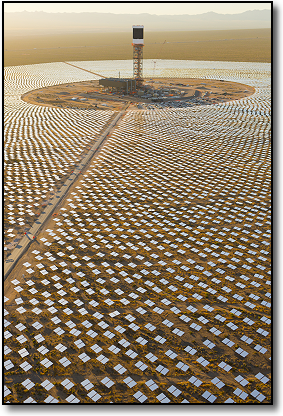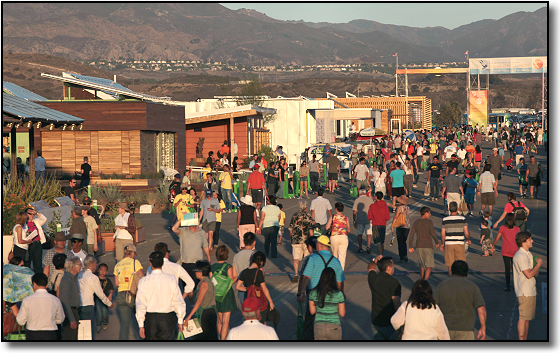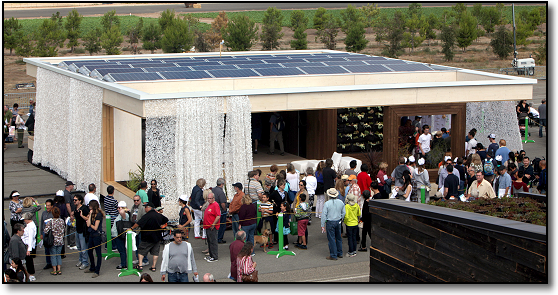 | |||||

|
* * * * * * In the summer of 2014, the site revolved around World Fairs/World Expos, leading up to the opening of the 2015 Expo in Milan, Italy. The Expo opened in May and will remain open through October. You can read more about it in the special feature section in the Essay Archives or visit the Milan Expo website at www.expo2015.org. As part of last summer's essays, information was also presented on another celebration taking place this year, what the United Nations has designated as "The International Year of Light and Light-Based Technologies." This summer's site is an acknowledgement of that celebration. Why? According to the International Year of Light website (www.light2015.org), the initiative is intended to "highlight to the citizens of the world the importance of light and optical technologies in their lives, for their futures, and for the development of society." A link to the short video introducing the year is included below, as presented by the International Society for Optics and Photonics (SPIE, www.spie.org). In just over a minute, the video shows only a small number of the ways light and light-based technologies affect people's lives: through agriculture, transportation, telecommunications, computers/visual displays, lasers, microscopes, space exploration, medicine, manufacturing and solar energy, to name a few.
But there is also another reason for the "light" in this year's theme. At the moment I am working on several other projects and am not sure how much time will be available to devote to the site. For the summer of 2015, special additions to the site, including the summer essays, have been temporarily on hold. So . . . this summer's version of the site has been a little "lite," so to say. However, there has been time to complete one essay for September, found a little further down the page. For those interested in the topic of light, the two light-related essays from last summer can be accessed by clicking the links below. [PLEASE NOTE: These essays also can be found in the Essay Archives. Clicking the links below will open the pages in a separate window for your convenience in case you'd like to read them after visiting the concert listings.] Also, two solar-energy related essays from July and August of 2010 also can be found in the Essay Archives. August 2014 - An "Illuminating" Subject . . . The Science of Light and Optics, Part I. Click here to read the August 2014 essay.
2015 Solar Energy Update and Solar Decathlon Preview The topic of solar energy was first covered on the site in July and August of 2010. The July essay explained solar power basics. The August essay continued with a brief look at the California Solar Initiative and incentives for the use of solar power in the state, including a few examples of how solar power was being used at the time in some of the cities covered on the site. Both are located in the current Essay Archives. The September 2015 essay will look briefly at some recent solar technolgy developments in California, how the use of solar technology has grown in recent years, and how those interested in seeing solar and other energy-efficient technologies in use in home-based settings may do so at the upcoming Solar Decathlon. Over the years, many of the site's articles have been "interactive" in the sense that the reader can go back and forth between the essay text and various information-related links embedded with it. By clicking the links the reader can view additional information from one or a variety of sources, then return to the essay. (The links are included for information purposes only. No guarantees are made as to the accuracy of the materials presented on the sites, although every effort has been made to search out reliable and respected sources of information.) Footnotes, a list of links and a bibliography also are included at the end of the text for anyone wishing to learn more about the subject(s) presented.
Photo at left: Thermal receiver tower and portion of computer-controlled mirrors (called heliostats) at Ivanpah Solar plant about 40 miles from Las Vegas. Photo credit: BrightSource Energy media images. The facility came online in 2013 and formally opened in February of last year. Early complaints in the first year of operation included birds being scorched by the intensity of the heat generated and excessive glare for pilots flying near the facility, issues which are currently being studied and addressed. (n1) Late last year, however, articles also began appearing indicating that energy production at the facility was falling well short of expectations, about 40% below original estimates for power generation. (n2) NRG Energy, which operates the plant and co-owns it with Google Inc. and BrightSource Energy, is reported as having said it might take until 2018 for the plant to reach its projected capacity of providing power for 140,000 homes in California. (n3) In an open letter responding to criticism from the Wall Street Journal, BrightSource Energy executives said this about Ivanpah: "Developing new, advanced technologies is not for the faint of heart. Because of its high profile nature, Ivanpah remains the subject of close scrutiny by those
others who may not agree with the policies that helped make it possible. We get that. However, a recent Journal article - High-Tech Solar Projects Fail to Deliver - ignored the steady progress at the project in recent months. In fact, following the Journal's article, Breaking Energy took a deeper
look at the numbers and reported Ivanpah’s solar production [was] up 170% in 2015. Whether or not the plant reaches its full projected capacity, and when, remains to be seen. It is a concern for many, particularly since the plant was built with the aid of a $1.6 billion federal loan guarantee. However, this type of large-scale solar facility, categorized at "utility-scale" solar power, has led solar power growth in the United States in recent years. Between 2013 and 2014, utility-scale solar power grew in the United States by 38 percent to reach a total of nearly 4 GW. The concentrating solar power segement, of which Ivanpah is part, had its largest growth year ever, with 767 MW of capacity installed. (n5) Calfornia leads the nation in both cumulative solar electric capacity and solar photovoltaic installed capacity, according to the SEIA. (n6) In addition, California has become the first state to generate more than 5 percent of its electricity from utility-scale solar power, and its utility-scale solar power output was more than in all other states combined. (n7) The U.S. Department of Energy has put together an online interactive map showing growth in U.S. (utility-scale) solar plants with a distributed capacity of 1MW or greater over the last 30 years. Between 1983 and 2013, the U.S. has built about 680 solar plants with a distributed capacity of 1 MW or greater, enough capacity to power about 1.7 million homes. The map can be viewed at www.energy.gov/articles/map-watch-30-years-us-solar-industry-growth. Though solar industry growth in the U.S. has been led by the utility-scale segment, the residential segment also grew by 51 percent between 2013 and 2014, crossing the 1 GW barrier for the first time. (n8) A question exists, however, as to whether or not this overall growth in solar energy usage can be sustained, particularly without government support. Projections from the SEIA show that despite current growth, a 57% decline of installed solar capacity is expected in 2017 with the expiration of the Investment Tax Credit. (n9) Also, Southern California Edison recently proposed charging a monthly fee on future residential solar installations, something "condemned by the solar industry and environmentalists." (n10) However, since residential solar is the segment of the industry which may have the most visible impact in people's day-to-day lives, the remainder of the essay will concentrate on an event taking place in Southern California next month, the Solar Decathlon. Those wishing to see ways in which solar energy (both alone and in combination with other energy-saving technologies) may be integrated both now and in the future in residential settings will have the chance to see those technologies being put to use at the event. THE 2015 SOLAR DECATHLON
Visitors tour the Solar Decathlon 2013 village at the close of public hours at the Orange County Great Park in Irvine on October 5, 2013. Photo credit: Eric Grigorian, U.S. Department of Energy What is the Solar Decathlon? The U.S. Department of Energy Solar Decathlon (www.solardecathlon.gov) is a competition which "challenges collegiate teams to design, build and operate solar-powered houses that are cost-effective, energy-efficient and attractive. The winner of the competition is the team that best blends affordability, consumer appeal and design excellence with optimal energy production and maximum efficiency." (n11) The houses are being built at the Orange County Great Park in Irvine, and the competition will take place from October 8 - 18. The event will be open to the public free of charge (with a $10 parking fee at the park) from 11 a.m. - 7 p.m. on October 8 - 11 and 15 - 18. The area will be closed to the public on other days for team competition events. The Solar Decathlon was first held in 2002 and has been held bienially since 2005. The last competition also was held at the Orange County Great Park in 2013. This year 16 teams from local, national and international colleges will compete. Full, working solar-powered houses are built on-site, and teams compete in ten catories. Each category is worth a maximum of 100 points and will be described briefly below. Anyone wishing to view more information can find further details on the Solar Decathlon website.
In 2013, California teams at the Solar Decathlon included ones from USC, Stanford and Cal Tech/Southern California Institute of Architecture. None of those schools will have teams in the competition this year. The 2015 California teams include ones from Cal Poly San Luis Obispo, CSU Sacramento, UC Davis, and the only local team, one comprised of students from UCI, Chapman University, Irvine Valley College and Saddleback College (www.teamoc2015.com). Their house is named "Casa del Sol," and a computer simulated walk-through of the house is included below. The video will give viewers an idea of the type of buildings they can see at the event as well as the work that goes into the process of creating the solar-powered structure.
If the Solar Decathlon site is organized the same way this year as it was in 2013, the homes will be constructed on both sides of a central walkway. In addition to the homes, there should be food/beverages for sale, an area for industry exhibitors, and some additional workshops/lectures. Tours were offered at no cost to the general public in 2013; if the same tours are offered this year in the same manor, they are a good introduction to the event and provide a brief overview of each of the homes constructed on the site. Though the tours do not go inside the houses, they can provide insight into the basics of the competition and help visitors prioritize which of the structures they would most like to see. Members from each of the teams provide commentary and information within their own sites. Solar Decathlon organizers recommend allowing at least three to five hours to visit the event; at peak times there can be lines to enter each of the homes. The image below shows the line of visitors waiting to tour the Team Austria house, built by students from the Vienna University of Technology, after it was announced as the overall winner of the 2013 competition.
Photo credit: Stefano Pattera, U.S. Department of Energy Solar Decathlon. REITERATING AN EARLIER THOUGHT
Thanks for visiting the essay section in 2015, and please come back again next year! FOOTNOTES - The following are the footnotes indicated in the text in parentheses with the letter "n" and a number. If you click the asterisk at the end of the footnote, it will take you back to the paragraph where you left off. n1 - See documents pertaining to Ivanpah Solar filed with the California Energy Commission at https://efiling.energy.ca.gov/lists/DocketLog.aspx?docketnumber=07-AFC-05C. (*) n2 - Danko, Pete, "At Ivanpah Solar Power Plant, Energy Production Falling Well Short of Expectations," Breaking Energy online, October 29, 2014; viewed online September 2015 at http://www.breakingenergy.com/2014/10/29/at-ivanpah-solar-power-plant-energy-production-falling-well-short-of-expectations. Also, Blood, Michael R., "Giant Ivanpah Solar Plant South of Las Vegas Falls Short," Associated Press story in the Las Vegas Review-Journal, November 17, 2014; viewed online September 2015 at http://www.reviewjournal.com/business/energy/giant-ivanpah-solar-plant-south-las-vegas-falls-short. (*) n4 - Desmond, Joe, "An Open Letter to the Wall Street Journal," BrightSource Energy, June 24, 2015. Letter viewed online September 2015 on BrightSource Energy website at http://www.brightsourceenergy.com/an-open-letter-to-the-wall-street-journal. (*) n5 - Solar Energy Industries Association (SEIA), "Solar Energy Facts: 2014 Year in Review," SEIA, Fact Sheet, December 17, 2014, p. 1. Downloaded in September 2015 from www.seia.org. (*) n7 - U.S. Energy Information Administration (EIA), "California First State to Generate More Than 5% of Electricity From Utility-Scale Solar," U.S. EIA, "Today in Energy," March 24, 2015; viewed online September 2015 at www.eia.gov/todayinenergy/detail.cfm?id=20492. (*) n8 - Solar Energy Industries Association (SEIA), "Solar Energy Facts: 2014 Year in Review," p. 1. (*) n10 - Orlowski, Aaron, "Edison Seeks Fee For New Solar Customers," Orange County Register, August 19, 2015, pp. News 1 & 10. (*) n11 - U.S. Department of Energy Solar Decathlon website, "About;" viewed online September 2015 at http://www.solardecathlon.gov/about.html. (*) n12 - Schaefer, John, Solar Living Sourcebook, 12th Edition, Hopland, CA: Gaiam Real Goods, 2005, p. 4 (*) n13 - Welter, Phillipe, "Editorial: Gainsville is the Start," Photon, November 2009, p. 3 (*) LINKS INCLUDED IN ESSAY - The following are external links included in the essay.
BIBLIOGRAPHY - The following is the Bibliography for the September 2015 essay. Blood, Michael R., "Giant Ivanpah Solar Plant South of Las Vegas Falls Short," Associated Press story in the Las Vegas Review-Journal, November 17, 2014; viewed online September 2015 at http://www.reviewjournal.com/business/energy/giant-ivanpah-solar-plant-south-las-vegas-falls-short. Danko, Pete, "At Ivanpah Solar Power Plant, Energy Production Falling Well Short of Expectations," Breaking Energy online, October 29, 2014; viewed online September 2015 at http://www.breakingenergy.com/2014/10/29/at-ivanpah-solar-power-plant-energy-production-falling-well-short-of-expectations. Desmond, Joe, "An Open Letter to the Wall Street Journal," BrightSource Energy, June 24, 2015. Letter viewed online September 2015 on BrightSource Energy website at http://www.brightsourceenergy.com/an-open-letter-to-the-wall-street-journal. Orlowski, Aaron, "Edison Seeks Fee For New Solar Customers," Orange County Register, August 19, 2015, pp. News 1 & 10. Schaefer, John, Solar Living Sourcebook, 12th Edition, Hopland, CA: Gaiam Real Goods, 2005. Solar Energy Industries Association (SEIA), "Solar Energy Facts: 2014 Year in Review," SEIA, Fact Sheet, December 17, 2014. Downloaded in September 2015 from www.seia.org. U.S. Department of Energy, Solar Decathlon, website, "About," viewed online September 2015 at http://www.solardecathlon.gov/about.html. U.S. Energy Information Administration (EIA), "California First State to Generate More Than 5% of Electricity From Utility-Scale Solar," U.S. EIA, "Today in Energy," March 24, 2015; viewed online September 2015 at www.eia.gov/todayinenergy/detail.cfm?id=20492. Welter, Phillipe, "Editorial: Gainsville is the Start," Photon, November 2009, p. 3.
Follow www.dorothyswebsite.org on TWITTER! Home |
Essays | Poetry | Free Concerts | Links | 2015 Extras |
About the Site |
||||
 | |||||
|
www.dorothyswebsite.org © 2003 - 2015 Dorothy A. Birsic. All rights reserved. Comments? Questions? Send an e-mail to: information@dorothyswebsite.org | |||||








 Anyone who has driven from Southern California to Las Vegas recently in daylight hours is sure to have noticed the large-scale
solar facility sitting just off Interstate 15 near the California-Nevada border. The facility, (pictured here) is known as the Ivanpah Solar Electric Generating System (
Anyone who has driven from Southern California to Las Vegas recently in daylight hours is sure to have noticed the large-scale
solar facility sitting just off Interstate 15 near the California-Nevada border. The facility, (pictured here) is known as the Ivanpah Solar Electric Generating System (


